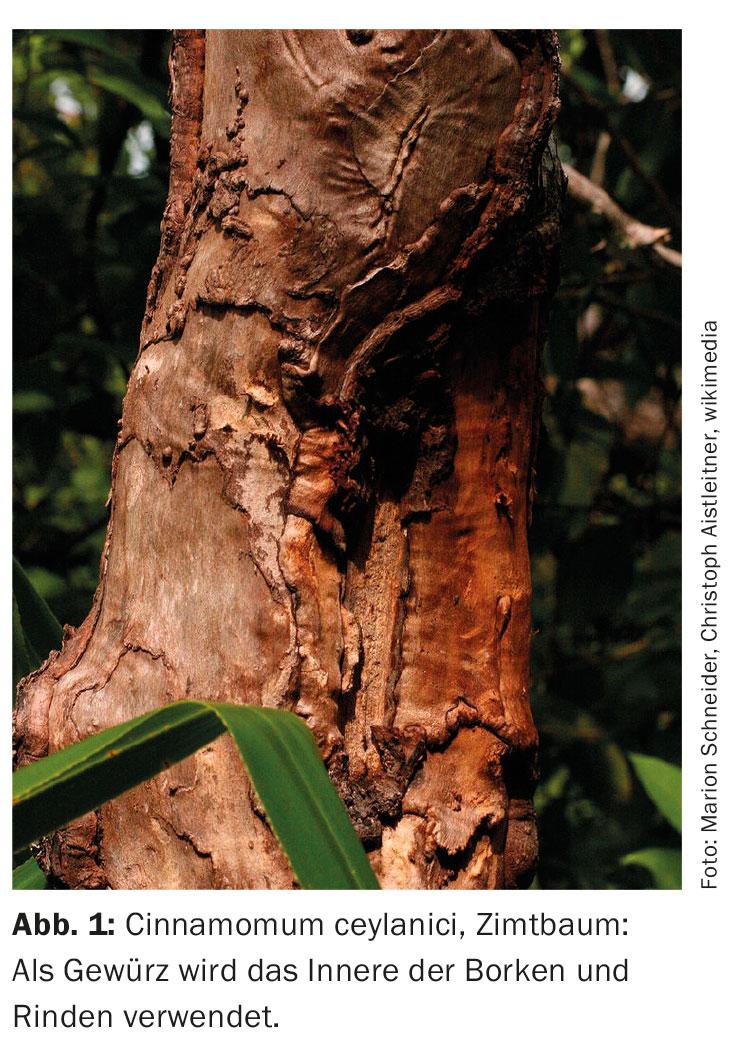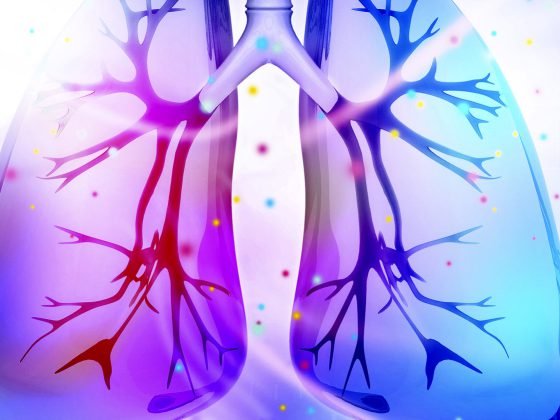Diabetes type 2 is not necessarily one of the diseases for which one expects a treatment possibility with herbal preparations. However, there are a number of medicinal plants of western phytotherapy with an antidiabetic potential. Some of them have been tested pharmacologically only and therefore have a theoretical significance at the moment. On the other hand, clinical studies already exist on the two medicinal plants Cinnamomum ceylanici (cinnamon) and Panax ginseng (ginseng).
The global incidence of diabetes mellitus is increasing. Currently, about 220 million people suffer from type 2 diabetes, and WHO expects 365 million cases by 2030, mainly related to Western lifestyles [1,2]. Therefore, lifestyle adjustment is an important non-drug factor in the treatment of diabetes. Weight loss, plenty of vegetables and fruits on the menu and enough exercise are among the basic measures. Since the pathogenesis of diabetes involves oxidative stress, antioxidant measures contribute to its treatment. In this regard, dietary measures specifically include fruits and vegetables with antioxidant properties.
Phytotherapy
Of course, people also developed diabetes in the past. Therefore, there are folk medicine treatment options to increase insulin production or with hypoglycemic properties. These include many medicinal plants. A recent review paper reported about 800 medicinal plants used worldwide to control diabetes [3]. Very many of them have antioxidant properties. In the aforementioned review, Nasri et al. list. about 100 different medicinal plants whose pharmacology enables antidiabetic action. This indicates that the plant in question is at best a candidate for antidiabetic therapy or as an adjuvant. In addition to many plants not used in Western phytotherapy, one can also find well-known names (Tab. 1).

For the time being, the practical use of these medicinal plants for medicine is still limited, as only pharmacological studies document their antidiabetic potential. But it is quite possible that clinical trials will be set up to allow practical applications to emerge from this theoretical benefit.
Clinical studies with cinnamon
However, there are also clinical studies documenting the efficacy of medicinal plants in type 2 diabetes. Various species of the genus Cinnamomum (cinnamon, Fig. 1) possess antidiabetic properties because a hydroxylchalcone has been isolated from them that promotes glucose uptake in adipocytes [15]. Further research showed that daily intake of 1, 3, or 6 g of cinnamon could lower serum concentrations of glucose and of lipids in patients with type 2 diabetes [16].

Clinical studies with ginseng
The medicinal plant Panax ginseng, ginseng, more commonly known as Roborans, also has antidiabetic activity. A Canadian research team led by Esra Shishtar published a meta-analysis in 2014 [17]. In this, 16 RCT studies were evaluated. Specifically, the study focused on the influence of ginseng on the following plasma levels in fasting subjects with and without type 2 diabetes:
- Glucose
- Insulin
- Glycohemoglobin
- Glucose-insulin homeostasis.
Ginseng significantly reduced plasma levels of glucose but had no effect on the other parameters. In their conclusion, the authors pointed out that the efficacy of ginseng in type 2 diabetes would need to be further explored in longer and larger studies to make a definitive statement.
Summary
With appropriate clinical studies, it may become possible that one or another of the medicinal plants mentioned can really be used against type 2 diabetes. In this context, however, it is important to point out the enormous regulatory hurdles that a company must overcome before it can launch a medicinal plant with a new indication. And since medicinal plant preparations generally belong to the preparations with low prices, there are hardly any companies that take on the financial effort for such a registration despite the unfavorable cost-benefit calculation.
This is certainly the problem of the two medicinal plants cinnamon and ginseng, with which clinical studies have already been made. In Switzerland there are several registered preparations with ginseng, but “only” with the indication asthenia or convalescence. With cinnamon, the situation is even more difficult. There is no cinnamon preparation that is registered as a drug, but there are various dietary supplements that are not allowed to give indications. Thus, a physician has no way to prescribe a person a drug that is reimbursed by the health insurance company.
Literature:
- Nasri H: On the occasion of the world diabetes day 2013; diabetes education and prevention; a nephrology point of view. J Renal Inj Prev 2013; 2: 31-32.
- Shahbazian H: World diabetes day; 2013. J Renal Inj Prev 2013; 2: 123-124.
- Nasri H, et al: Antioxidant plants and diabetes mellitus. J Res Med Sci 2015; 20(5): 491-502.
- Shoji Y, Nakashima H: Glucose-lowering effect of powder formulation of African black tea extract in KK-A(y)/TaJcl diabetic mouse. Arch Pharm Res 2006; 29: 786-794.
- Kim SH, Hyun SH, Choung SY: Anti-diabetic effect of cinnamon extract on blood glucose in db/db mice. J Ethnopharmacol 2006; 104: 119-123.
- Kazemi S, et al: Preventive effect of Pumpkin (Cucurbita pepo L.) on diabetic index and histopathology of pancreas in Alloxan-induced diabetes in rats. J Isfahan Med Sh 2011; 28: 872-881.
- Aslan M, et al: In vivo antidiabetic and antioxidant potential of Helichrysum plicatum ssp. plicatum capitulums in streptozotocin-induced-diabetic rats. J Ethnopharmacol 2007; 109: 54-59.
- Asgary S, et al: Effect of ethanolic extract of Juglans regia L. on blood sugar in diabetes-induced rats. J Med Food 2008; 11: 533-538.
- Cemek M, et al: Antihyperglycemic and antioxidative potential of Matricaria chamomilla L. in streptozotocin-induced diabetic rats. J Nat Med 2008; 62: 284-293.
- Narendhirakannan RT, Subramanian S, Kandaswamy M: Biochemical evaluation of antidiabetogenic properties of some commonly used Indian plants on streptozotocin-induced diabetes in experimental rats. Clin Exp Pharmacol Physiol 2006; 33: 1150-1157.
- Meddah B, et al: Nigella sativa inhibits intestinal glucose absorption and improves glucose tolerance in rats. J Ethnopharmacol 2009; 121: 419-424.
- Eidi A, Eidi M, Darzi R: Antidiabetic effect of Olea europaea L. in normal and diabetic rats. Phytother Res 2009; 23: 347-350.
- Hannan JM, et al: Aqueous extracts of husks of Plantago ovata reduce hyperglycaemia in type 1 and type 2 diabetes by inhibition of intestinal glucose absorption. Br J Nutr 2006; 96: 131-137.
- Behradmanesh S, Derees F, Rafieian-kopaei M: Effect of Salvia officinalis on diabetic patients. J Ren Inj Prev 2013; 2(2): 51-54.
- Jarvill-Taylor KJ, Anderson RA, Groves DJ: A hydroxxchalcone derieved from cinnamon functions as a mimetic for insulin in 3T3-LI adipocytes. J Am Coll Nutr 2001; 20: 327-336.
- Khan A, et al: Cinnamon improves glucose and lipids of people with type 2 diabetes. Diabetes Care 2003; 26(12): 3215-3218.
- Shishtar E, et al: The effect of ginseng (the genus panax) on glycemic control: a systematic review and meta-analysis of randomized controlled clinical trials. PLoS One 2014; 9(9): e107391.
HAUSARZT PRAXIS 2016; 11(2): 4-6











